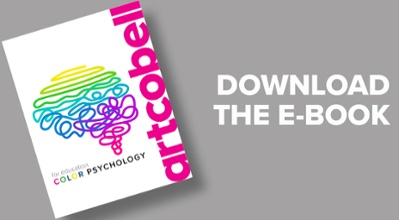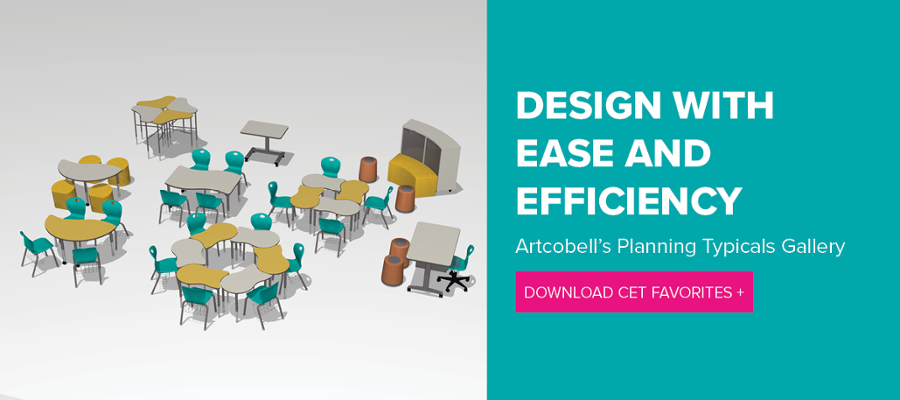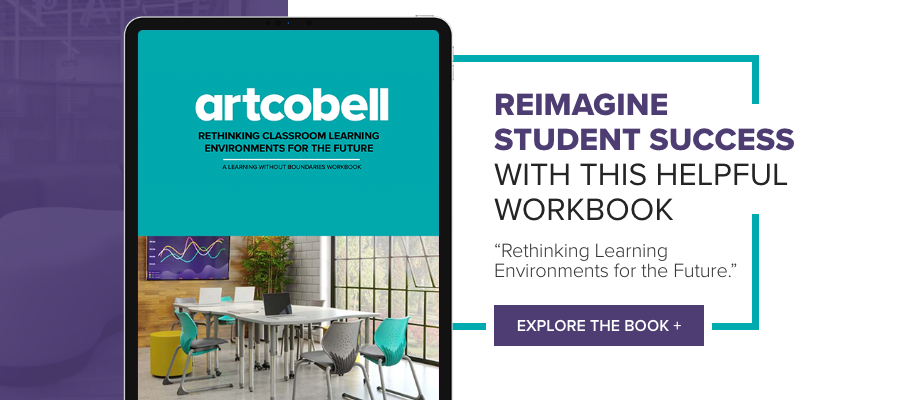Color Psychology for Education: How Does Green Enhance the Learning Environment?
Green is all around us. It is a color that has long been associated with nature, tranquility, and peace and is arguably the most important color students should have access to in their learning environments. Exposure to live plants and the color green have a positive impact upon visual and verbal creative thinking in classroom settings.
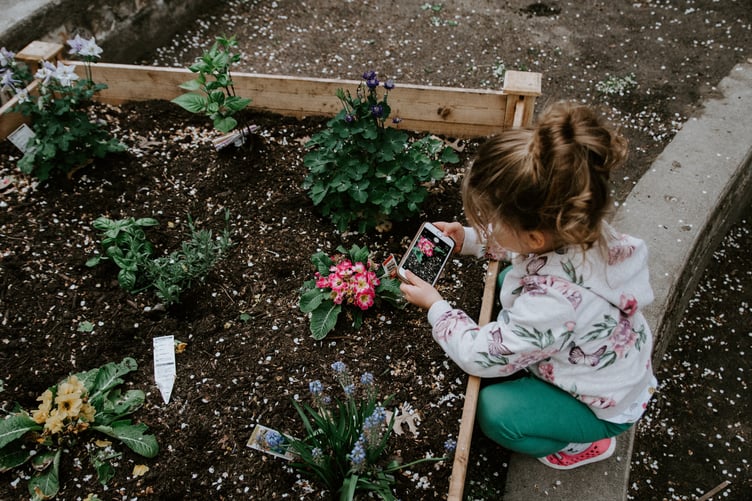
“In every walk with Nature, one receives far more than he seeks.” - John Muir
COLOR PSYCHOLOGY FOR EDUCATION
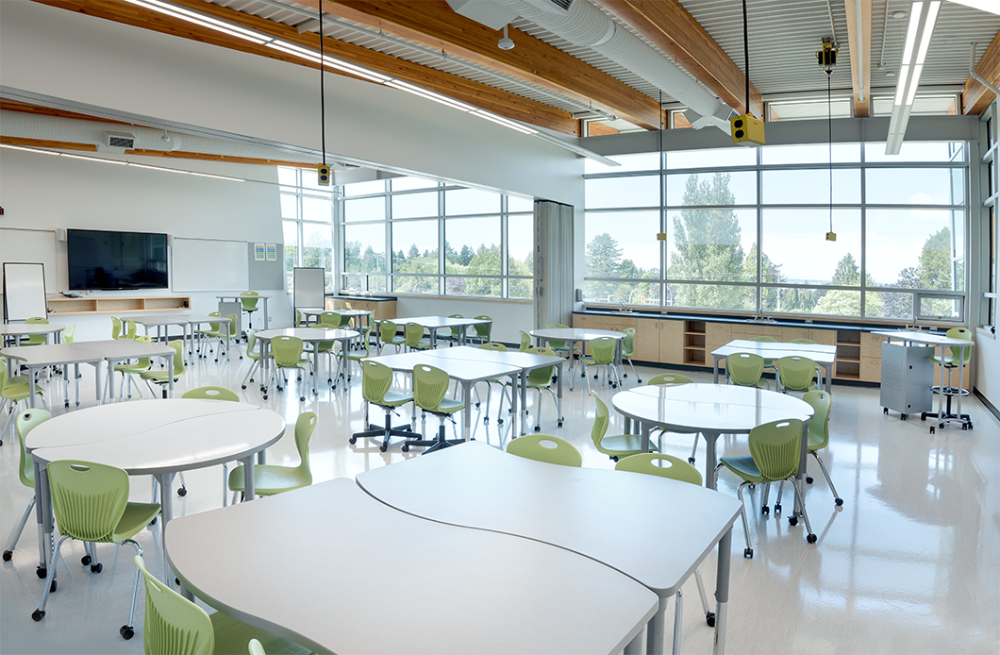
Colors for Learning: The impact of green
There are hundreds of studies that support the idea that experiences with nature boost academic learning and improve children's psychological and physical well-being. But what if your students do not have access to an outdoor classroom or the freedom to take a stroll outside? Luckily, even having a view of nature out of the window helps restore kids' attention, providing them the opportunity to reset their concentration.3
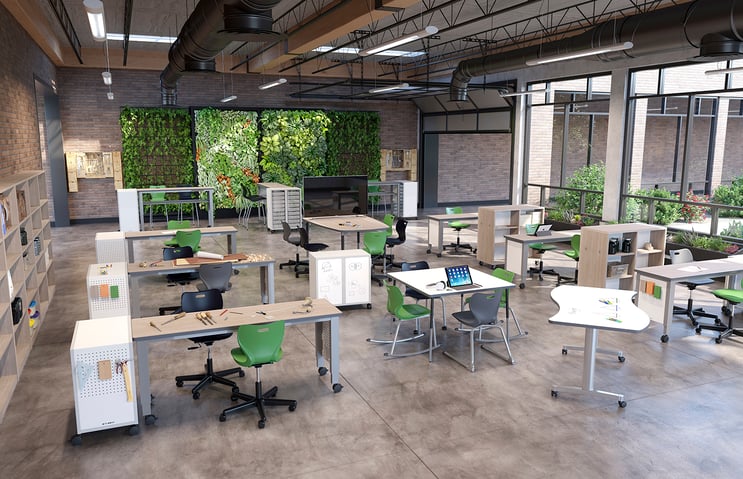
A little bit of green has a great effect on happiness. - Bobby Berk
green is commonly associated with:
- Nature
- Harmony
- Tranquility
- Peace
- Growth
- Renewal
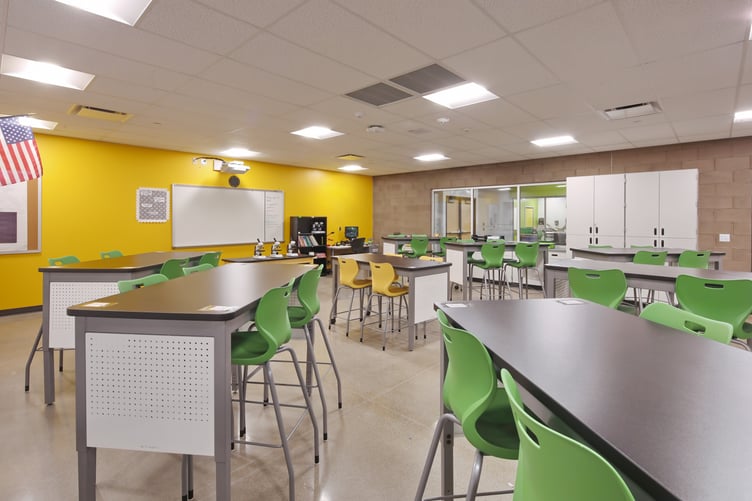
Other beneficial colors that reflect the natural world are yellow, which reminds us of warmth, sunshine, and happiness, and blue, representing sky and water, which can lower blood pressure and relieve stress, allowing for maximum focus and awareness.
use green as a stimulant to:
- Focus
- Relax
- Inspire creativity
- Motivate
- Reduce fatigue
- Relieve stress
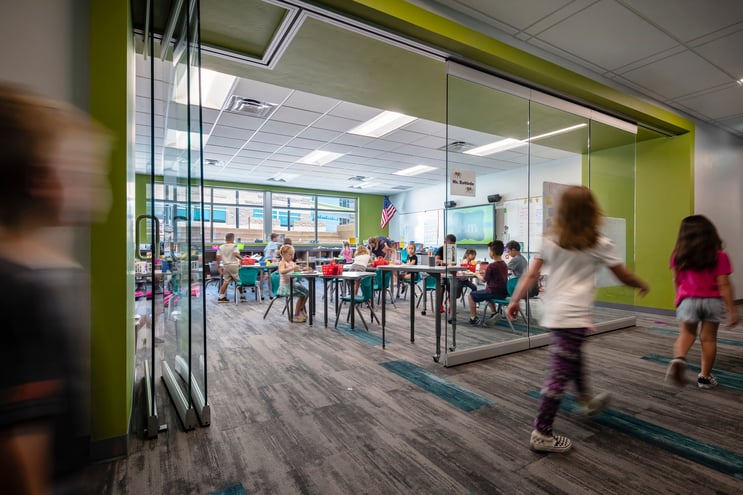
The meanings of green can vary by shade. For example, bright green represents rebirth and spring whereas olive green embodies earthliness and tranquility.
green has the ability to:
- Promote balance
- Generate positive outcomes
- Provide a sense of security
- Improve memory
- Stabilize the nervous system
- Alleviate anxiety and depression
- Increase self-control and compassion
- Reduce irritability
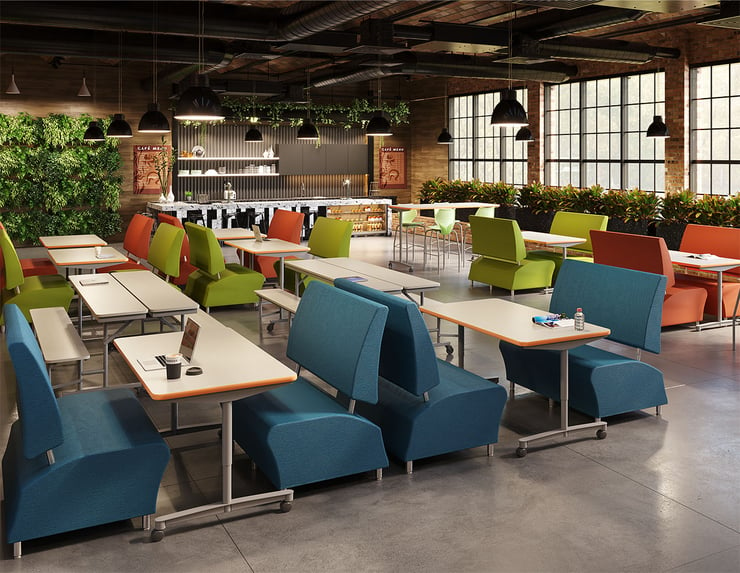
In a study of secondary schools, Matsuoka found that the amount of green space visible from cafeteria and classroom windows was positively linked with test scores, graduation rates, and percentage of students planning to attend post-secondary education.6
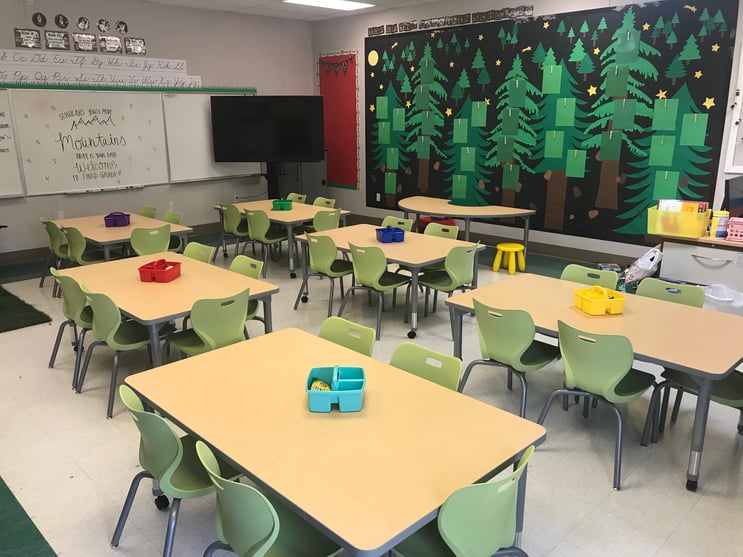
Consider apple green or clover chairs paired with natural colored worksurfaces for rooms without a view of nature.
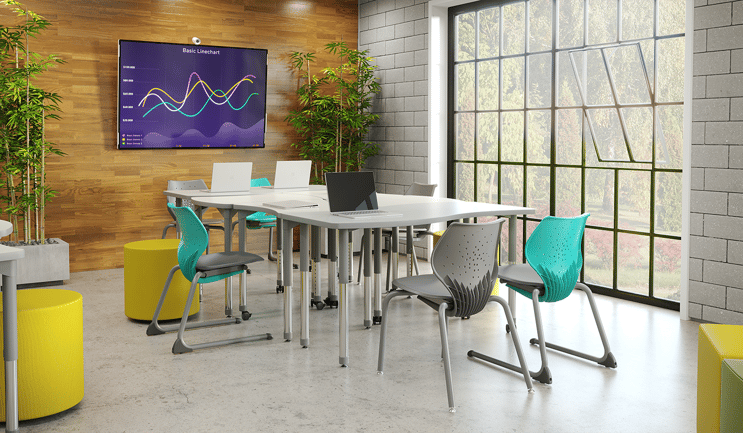
I go to nature to be soothed and healed and to have my senses put in tune once more. - John Burroughs
Research has shown that creativity is likely to increase when people are surrounded by green plants and have access to green views of nature.8
three tips for designing with green in learning environments:
- Bring the outside in: Maximize students' and teachers' health and well-being by adding a few green plants into your classroom.
- Wallpaper: Replace your basic bulletin board with a bold nature print keeping the base green. It will create a wonderful natural theme (think forest or jungle).
- Views of nature: If you don't have nature views, consider a plant wall (real or faux), a green rug, or pictures of greenery to hang on the wall.
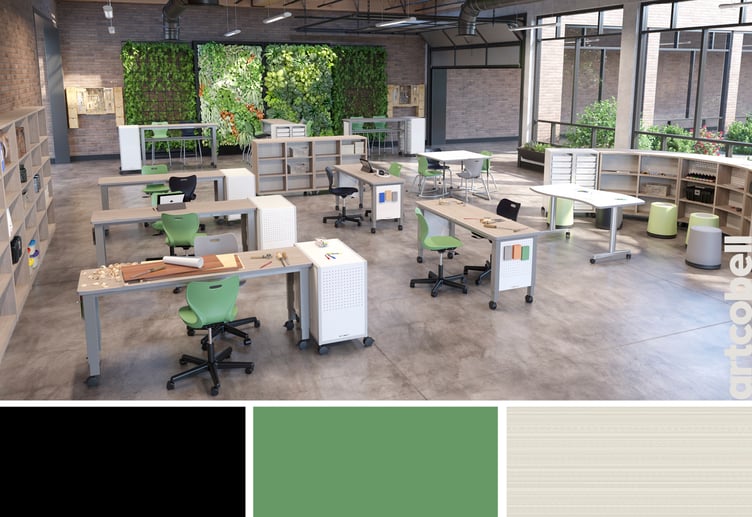 >>> Download favorite (.cmfav) and insert this layout in your CET drawing.
>>> Download favorite (.cmfav) and insert this layout in your CET drawing.
-
Photo by Kelly Sikkema on Unsplash
- Vancouver Salish School
- Li, D., & Sullivan, W. (2016). Impact of views to school landscapes on recovery from stress and mental fatigue. Retrieved 29 August 2022, from https://www.sciencedirect.com/science/article/abs/pii/S0169204615002571
- Casa Grande Elementary, Photo by CDP Photography
- Dove Mountain CSTEM K-8 School, Marana USD, Photo by Corgan
- Matsuoka RH. Student performance and high school landscapes: examining the links. Landscape and Urban Planning. 2010; 97(4): 273–282.
- Acton Elementary
- Studente S, Seppala N, Sadowska N. Facilitating creative thinking in the classroom: Investigating the effects of plants and the colour green on visual and verbal creativity. Thinking Skills and Creativity. 2016;19:1-8. doi:10.1016/j.tsc.2015.09.001
Recent Posts
In part one of our series on thoughtful classroom design, we heard an educator’s perspective on...
In part one of our series on thoughtful classroom design, we heard an educator’s perspective on...
